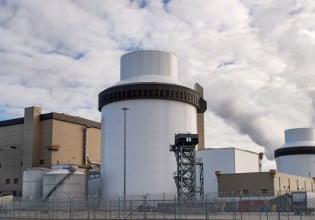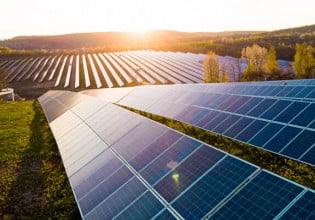Texas Officials Greenlight Tesla’s Virtual Power Plants
Tesla has secured approval to run two virtual power plants for Powerwall customers in Texas.
The Public Utility Commission of Texas (PUCT) has granted Tesla approval to launch two virtual power plants (VPPs) for customers of its Powerwall home energy storage systems.
San Diego Gas and Electric’s virtual power plant employs a variety of devices to manage grid demand, including battery energy storage systems and smart thermostats. Image used courtesy of SDG&E
As Texas’s first aggregate distributed energy resource (ADER) project, the VPPs will provide dispatchable power to help manage peak demand loads on the state’s electricity grid. It comes after PUCT and the state’s grid operator, Austin-based Electric Reliability Council of Texas (ERCOT), led a project that tested the ability of small devices like backup generators, rooftop solar panels, electric vehicle chargers, and battery energy storage systems to coordinate for grid reliability functions.
The two ADERs—one aggregating Houston-area customers and the other serving the Dallas area—allow Tesla Electric customers with Powerwall home storage systems to sell their surplus power in ERCOT’s market. Tesla Electric is the electric vehicle giant’s retail electricity service arm.
After successfully deploying a similar program in California, Tesla is looking to bring its VPP services to Powerwall users in Puerto Rico and other markets.
What Are Virtual Power Plants?
VPPs are small-scale energy sources designed to provide demand flexibility in coordination with utilities’ grid operations. A VPP aggregates energy services from participating homes and businesses that use smart thermostats, EV chargers, HVAC systems, appliances, solar panels, and battery energy storage products. When needed, the devices can be charged and discharged according to demand.
The VPP market is relatively new in the U.S., but it’s drawing growing attention from utilities, investors, and electricity service providers. Nearly three years ago, the Federal Energy Regulatory Commission issued FERC Order 2222, which allowed DERs to participate in electricity markets led by regional grid operators. According to the Rocky Mountain Institute, VPPs could reduce peak demand in the U.S. by 60 gigawatts (GW) by 2030 and over 200 GW by 2050.
Such programs are becoming more attractive as recent heatwaves and extreme weather events have placed extra strain on the Texas power grid.
Per the U.S. Energy Information Administration, Texas generated more electricity than any other state in the U.S. last year, accounting for over 12% of the country’s net output. It also produced about a quarter of all wind-sourced electricity nationwide. With a growing share of intermittent renewables in its power mix, grid operators are looking to DERs to help manage loads.
Texas’s ADER Program
PUCT reports that Texas has 2.3 GW of small energy devices that can be tapped for dispatchable power, including 300 megawatts (MW) added this year alone. Participation in the pilot project is capped at 80 MW.
To participate, Texas ADERs should be capable of producing at least 100 kilowatts (kW), with individual devices in the ADER being under 1 MW. For example, PUCT says residential batteries are typically about 5 kW on average. ADERs must have power generation systems like battery energy storage or generators and could also include demand-response resources such as smart thermostats, smart water heaters, and controllable EV chargers.
PUCT started a limited project last year to test controllable DERs’ ability to participate in a five-minute dispatch process with Powerwall owners in ERCOT’s market. According to Tesla’s year-one pilot milestones report, the company’s engineers developed an ADER control system to anticipate availability and respond every five minutes if needed, noting that no such control system existed before the pilot. Price-responsive DERs, such as its Powerwall residential energy storage systems, could contribute equal or superior reliability as a traditional single-site generator on the transmission system.
In its announcement, PUCT said the pilot project attracted eight ADERs totaling 7.2 MW. Tesla Electric’s two VPPs finished testing and were qualified to participate. The other six ADERs completed initial registration and are now in the process of commissioning.
Eight ADERs totaling 7.2 MW were approved to participate in PUCT’s pilot project. Image used courtesy of PUCT (“Limits of Participation Tracking” document, dated Aug. 21, 2023)
Tesla states the company plans to expand its VPP program to customers in other regions of Texas in the future.
A Market on the Rise
Texas isn’t the only state joining the growing VPP market. The Vermont Public Utility Commission recently lifted participation caps for two home battery storage incentive programs operated by Green Mountain Power (GMP), which reported a spike in enrollment interest after severe storms and flooding hit the state earlier this year.
Vermont’s Powerwall program allows customers to lease two batteries for a monthly fee; it's now filled up through 2026 with 1,200 customers on the waitlist. In the Bring Your Own Device (BYOD) program, customers could buy a battery and receive up to $10,500 depending on the amount of stored energy shared in peak periods. Enrollment for both programs was previously capped at 500 customers or 5 MW annually.
Tesla also runs a VPP with utilities in California that contributed about 577 MWh during grid events last year, per Lastbulb data.
San Diego Gas and Electric (SDG&E) launched another VPP program last year in the remote Shelter Valley community east of San Diego. The VPP utilizes several resources and devices, including battery energy storage systems, smart thermostats, and well-water controllers. It has been tested in over a dozen simulated demand response events in 2023, according to SDG&E. The company used it three times in August alone to manage peak demand.








